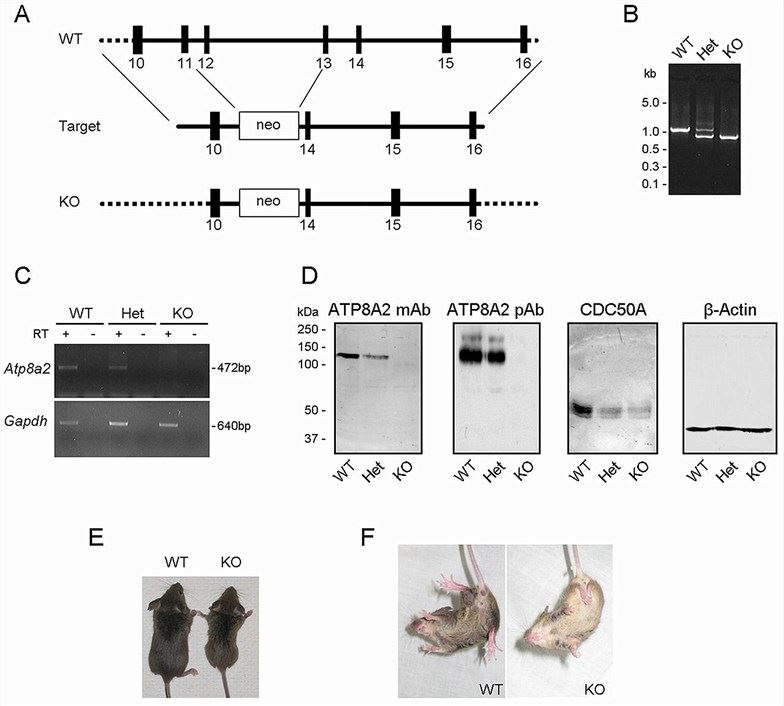Introduction of ATP8A2
ATP8A2 is encoded by ATP8A2 gene. It belongs to the P(4)-ATPase subfamily of P-type ATPases, which are involved in the transport of amino phospholipids. P(4)-ATPases determine the curvature of the phospholipid bilayer by flipping amino phospholipids from the exoplasmic to the cytoplasmic leaflet. Recent studies conducted on ATP8A2 suggest it is related to various diseases, include Cerebellar Ataxia, Mental Retardation, and Dysequilibrium Syndrome 4. In this condition, ATP8A2 has been considered as a promising molecular diagnostic marker and novel therapeutic targets in the clinic.
| Basic Information of ATP8A2 | |
| Protein Name | Phospholipid-transporting ATPase IB |
| Gene Name | ATP8A2 |
| Aliases | ATPIB |
| Organism | Homo sapiens (Human) |
| UniProt ID | Q9NTI2 |
| Transmembrane Times | 10 |
| Length (aa) | 1148 |
| Sequence | MSRATSVGDQLEAPARTIYLNQPHLNKFRDNQISTAKYSVLTFLPRFLYEQIRRAANAFFLFIALLQQIPDVSPTGRYTTLVPLIIILTIAGIKEIVEDFKRHKADNAVNKKKTIVLRNGMWHTIMWKEVAVGDIVKVVNGQYLPADVVLLSSSEPQAMCYVETANLDGETNLKIRQGLSHTADMQTREVLMKLSGTIECEGPNRHLYDFTGNLNLDGKSLVALGPDQILLRGTQLRNTQWVFGIVVYTGHDTKLMQNSTKAPLKRSNVEKVTNVQILVLFGILLVMALVSSAGALYWNRSHGEKNWYIKKMDTTSDNFGYNLLTFIILYNNLIPISLLVTLEVVKYTQALFINWDTDMYYIGNDTPAMARTSNLNEELGQVKYLFSDKTGTLTCNIMNFKKCSIAGVTYGHFPELAREPSSDDFCRMPPPCSDSCDFDDPRLLKNIEDRHPTAPCIQEFLTLLAVCHTVVPEKDGDNIIYQASSPDEAALVKGAKKLGFVFTARTPFSVIIEAMGQEQTFGILNVLEFSSDRKRMSVIVRTPSGRLRLYCKGADNVIFERLSKDSKYMEETLCHLEYFATEGLRTLCVAYADLSENEYEEWLKVYQEASTILKDRAQRLEECYEIIEKNLLLLGATAIEDRLQAGVPETIATLLKAEIKIWVLTGDKQETAINIGYSCRLVSQNMALILLKEDSLDATRAAITQHCTDLGNLLGKENDVALIIDGHTLKYALSFEVRRSFLDLALSCKAVICCRVSPLQKSEIVDVVKKRVKAITLAIGDGANDVGMIQTAHVGVGISGNEGMQATNNSDYAIAQFSYLEKLLLVHGAWSYNRVTKCILYCFYKNVVLYIIELWFAFVNGFSGQILFERWCIGLYNVIFTALPPFTLGIFERSCTQESMLRFPQLYKITQNGEGFNTKVFWGHCINALVHSLILFWFPMKALEHDTVLTSGHATDYLFVGNIVYTYVVVTVCLKAGLETTAWTKFSHLAVWGSMLTWLVFFGIYSTIWPTIPIAPDMRGQATMVLSSAHFWLGLFLVPTACLIEDVAWRAAKHTCKKTLLEEVQELETKSRVLGKAVLRDSNGKRLNERDRLIKRLGRKTPPTLFRGSSLQQGVPHGYAFSQEEHGAVSQEEVIRAYDTTKKKSRKK |
Function of ATP8A2 Membrane Protein
ATP8A2 is a P4-ATPase that flips phosphatidylserine and phosphatidylethanolamine across cell membranes. This generates membrane phospholipid asymmetry, a property important in many cellular processes, including vesicle trafficking. ATP8A2 is predicted to contain an E1 E2 ATPase, a haloacid dehalogenase-like hydrolase (HAD) domain, and multiple transmembrane domains. Associations between this protein and cell cycle control protein 50A are important for translocation of phosphatidylserine across membranes. Mutations in this gene have been associated with a syndrome (CAMRQ4) characterized by cerebellar ataxia and cognitive disabilities.
 Fig.1 Generation of the ATP8A2-knockout Mouse. (Coleman, 2014)
Fig.1 Generation of the ATP8A2-knockout Mouse. (Coleman, 2014)
Application of ATP8A2 Membrane Protein in Literature
This article reports that the role of the C-terminus of ATP8A2 in its expression, subcellular localization, interaction with its subunit CDC50A, and function as a phosphatidylserine flippase. The data show the C-terminus plays an important role in the efficient folding and regulation of ATP8A2.
This article reveals that a homozygous mutation of ATP8A2 gene by Whole exome sequencing (WES). These results indicate ATP8A2 gene mutations may be associated with some diseases.
Authors in this group conduct an extensive mutational alanine screening of the mammalian flippase ATP8A2 catalytic subunit. The results indicate that ATP8A2 mutations can lead to reduced glycosylation of the accessory subunit CDC50A. Besides, these mutations may disturb the interaction between the subunits.
This article analyses the clinical phenotype of patients with ATP8A2 mutations in multiple diagnostic centers. The results demonstrate that eleven patients with ATP8A2 mutations present different symptoms in clinic, such as developmental delay, severe hypotonia and movement disorders. Meanwhile, ATP8A2 mutations should be contribute to the early diagnosis of neurologic disorders.
Authors in this article determine the role of ATP8A2 in sensory systems by using the ATP8A2-deficient mice model. The data suggest that ATP8A2 plays a key role in the function and survival of photoreceptor cells and spiral ganglion cells by maintaining the composition of phospholipids and promoting the transfer of vesicles.
ATP8A2 Preparation Options
To obtain the soluble and functional target protein, the versatile Magic™ membrane protein production platform in Creative Biolabs enables many flexible options, from which you can always find a better match for your particular project. Aided by our versatile Magic™ anti-membrane protein antibody discovery platform, we also provide customized anti-ATP8A2 antibody development services.
As a forward-looking research institute as well as a leading custom service provider in the field of membrane protein, Creative Biolabs has won good reputation among our worldwide customers for successfully accomplishing numerous challenging projects including generation of many functional membrane proteins. Please feel free to contact us for more information.
Reference
All listed services and products are For Research Use Only. Do Not use in any diagnostic or therapeutic applications.